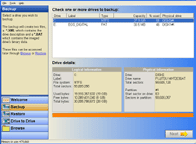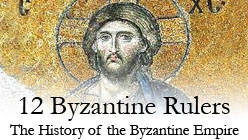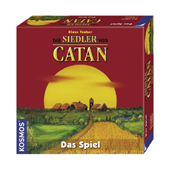30 June 2006
CORBA debates
This article addresses criticisms of CORBA levelled by Michi Henning in a recent ACM Queue article: The OrbZone サ Response to "The Rise and Fall of CORBA by Michi Henning"
28 June 2006
Windows-based Disk Image Tools

Every so often I have to redo a technical task where all the tools have changed since the last time I did it. Recently this happened with the requirement to migrate from a 60Gig hard disk to a 100Gig one in my Tablet PC laptop. I have done this type of task very frequently with various types of Unix file systems, including the Linux ext2 and ext3 filesystems, and I know how to safely copy files or sectors and keep boot partitions working and so forth. The complication here was that NTFS did not let me do a simple recursive copy (when I attached the old and the new disk to a desktop m/c via USB 2.0 - the easiest for me) due to permissions, and I didn't have a suitable tool for direct sector copying (i.e. just imaging the disk) on Windows XP.
After investigating various tools, many of which required a reboot in some customised boot environment for safely repartitioning the current live boot disk (a problem I did not need to address) and finding that these new boot environments didn't support my USB mouse/keyboard, or the USB 2.0 to IDE disk controllers I had, I stumbled upon this excellent utility: DriveImage XML. Well, this sorted the problem easily, I just pointed at the source and destination disks, having selected a direct copy from drive to drive. The copy took a few hours. Then I just had to mark the new partition active with the standard MS XP disk tools (they also provided a copy of bundled with the utility just in case) and my laptop booted with the new disk perfectly - it even auto resized the partition to the new disk size, so I didn't have to do any further messing with the partitions. So in this case the search for the right tool, and wondering about the right approach, took longer than the task itself, as often happens with systems adiministration.
So I'd recommend DriveImage XML for managing Windows filesystems on a Windows XP box. Looks like it can also take a snapshot image of a working system for later restoration if necessary. What impressed me was the professionalism of the product (despite it being free) both in terms of usability and documentation.
DriveImage XML is an easy to use and reliable program for imaging and backing up partitions and logical drives.The program allows you to:
# Backup logical drives and partitions to image files
# Browse these images, view and extract files
# Restore these images to the same or a different drive
# Copy directly from drive to drive
# Schedule automatic backups with your Task SchedulerImage creation uses Microsoft's Volume Shadow Services (VSS), allowing you to create safe "hot images" even from drives currently in use.
Images are stored in XML files, allowing you to process them with 3rd party tools. Never again be stuck with a useless backup!
Restore images to drives without having to reboot.
DriveImage XML runs under Windows XP Home, XP Professional and Windows Server 2003 only. The program will backup, image and restore drives formatted with FAT 12, 16, 32 and NTFS.
By the way, there is of course a place for the other tools I didn't use that create separate boot environments. Most famous of these for Windows-based machines is BartPE for which many plugins exist for different system administratio tasks requiring a separate boot environment.
WinPE and BartPE:
WinPE (Windows Preinstallation Environment) is a stripped down version of WinXP or Win2003 that can be booted from the CD. It provides a win32 environment and can acccess both FAT and NTFS volumes. But it is only available for microsoft OEM customers. As a replacement with enhanced functionality, Bart Lagerweij has created PEBuilder which can build a similar environment using WinXP or Win 2003 installation CD. This created environment is called BartPE. BartPE can do everything WinPE can do and more. It supports plugins(search BartPE Plugins),so that you can add your custom applications that run in a Win32 environment such as EasyRecovery 6, antivirus such as Mcaffee, Nod32, and other applications such as Drive Image 2002, Symantec Ghost 8 and more into the CD. This allows us to create a complete disaster recovery solution in one CD. This is the reason that this site has more content of BartPE than any other solution. The current status of the BartPE plugin database is always displayed on the left of this page.MultiBoot CD:
A multiboot CD is simply one which upon booting, presents a selection of bootable options such as BartPE, WinPE, 911CD, R.I.P. Linux, DOS bootfloppy images, and more. The user can then select the appropriate option to continue booting. This allows us to create one CD or DVD which can hold a number of seperately bootable components such as BartPE, or one of the Acronis bootable Media or more. I have written a basic tutorial which describes the process of creating one such multi-bootable CDs using one of the best tools available - Bootable CD Wizard by reanimatolog.
Of course all this is just the equivalent of rebooting into a single user mode in Unix where you can do low level disk partition type activities safely. I guess if you have the mental concepts for what is possible, relearning new tools for specific requirements is relatively easy.
Just a mention of some other approaches to this problem: g4u (ghost 4 unix) (NetBSD-based boot environment with disk tools) and PartImage (Linux-based boot environemnt with disk tools - NTFS is "exterimental").
22 June 2006
12 Byzantine Rulers

An excellent set of podcasts explaining the history of the Byzantine Empire: 12 Byzantine Rulers (The History of The Byzantine Empire by Lars Brownworth).
AMQP Working Group (MOM Standards)
Steve Vinoski extolls the new AMQP standardisation effort for Message Oriented Middleware in Middleware Matters: Finally, a messaging standard. We wish them success with thiese efforts!
Having been involved in middleware standards for many years, I've often wondered why real message-oriented middleware (MOM) standards didn't seem to exist. There are proprietary message queuing products, but they don't talk to each other. There's JMS, but of course that's just an API standard, and actual JMS implementations don't necessarily talk to each other, either.
Today, a number of companies, including IONA, Cisco, JPMorgan Chase, and Red Hat, announced the formation of the Advanced Message Queuing Protocol (AMQP) Working Group. There are currently several interoperable implementations of AMQP 0.8 in production, and this group is initially working to produce an AMQP 1.0 specification. I think John O'Hara, VP and Distinguished Engineer at JPMorgan, sums it up perfectly: "AMQP solves the 'missing middleware standard' problem."
These days, standards are all too often designed by committee, or are solutions (usually poor ones) in search of a problem. Judging from a recent panel that I was part of, people are fed up with this. I've previously written about problems with standards, and my old friend Michi Henning just published an article that details such as problems as well. The beauty of this AMQP effort is that the working group is formed around an already-working system. In other words, we're taking something already proven to work well in practice and standardizing it. That's exactly how standards should be created.
Look here for more information about AMQP and to download the 0.8 specification.
19 June 2006
Auto-processing Texts for geographical References
This looks like a very interesting concept: O'Reilly Radar >Gutenkarte: Geo annotation of Gutenberg texts. A sample map generated: Thucydides' classic The History of the Peloponnesian Wars. Just think, you could do with thrillers set in a city and track the chase scenes on a map! Excellent stuff.
13 June 2006
Boardgames (Settlers of Catan)

It is nice to see a renewed interest in strategic board games, the physical nature of this type of gaming makes it more real than much computer-based gaming. Martin Fowler on Boardgames: MF Bliki: BoardGames
In the last year or so I've been getting back into board games. If the phrase 'board game' conjures up Monopoly or Risk in your mind, that the wrong image. I played board games a fair bit in my teens, but even then I had little time for such poor games. My taste then led to Diplomacy and Kingmaker - but then drifted off into simulation war-games and D&D. My recent re-ignition has been around German-style Board Games, ironically fed by my old D&D group in the UK. While we've been over here for a few weeks we've had the chance to do a good bit of board gaming - it's tougher in the US as we don't have a group of friends in the Boston area who are into board games.
A community, focused in Germany, developed around designing board games in the 80's or so with a particular set of principles. The idea is to make board games that have interesting tactics and strategy, yet are easy to learn, play in a couple of hours, stay fresh with multiple plays, and keep everyone fully engaged till the finish. This style really flowered with a game called Settlers of Catan in 1995, and now there are quite a few excellent games in this category, many of which are recognized by the Spiel des Jahres award.
...
For most readers of the this blog, the best game to try to see if you like this sort of thing is Settlers of Catan - the game that's paved the way for this genre around the world. You can learn how to play in ten minutes of play and be competitive in your first game. However there's lots of room for skill as you choose between multiple strategies which have to change as other people make their moves. The board represents an abstract island on which you build settlements and cities, for which you need resources that the island provides. The island is dealt out differently each time, which helps keep the game varied. You also get resources by trading with other players, which keeps the game very interactive. We've played it a couple of dozen of times, often night after night, and so far it hasn't got stale at all.
I have the orginal German edition of The Settlers of Catan (Die Siedler von Catan) and its two expansion packs: Cities and Knights (St臈te & Ritter) and Seafarers (Seefahrer). These all have coloured wooden pieces, and the board is made of hexagonal cardboard that can build up a unique map as the settlers explore.
Image of Settlers of Catan game in progress
As well as the German boardgame revival, I love the card games such as Steve Jackson's Illuminatii. I've had many's a long night playing this with family and friends. The only problem these days is lining up people to play and time to do it :-)
9 June 2006
IPv6 Forum Roadmap & Vision
The IPv6 Forum has released its IPv6 Forum Roadmap & Vision document.
Ladid, Latif and Bound, Jim and Pouffary, Yanick and Rich, Yurie and Green, David (2006) IPv6 Forum Vision 2010 Roadmap. In: The IPv6 Forum World Congress, 21-22 February 2006, Las Vegas.
This document was based on discussions at the IPv6 World Congress in February 2006, Las Vegas, and on subsequent discussions.
The document combines a technical perspective and overview (drawing on the core expertise of the IETF members who specified the RFCs that make up IPv6, and related industrial and academic research expertise), and a business case overview. The report places these perspectives within the context of models predicting when IPv4 address shortage will start to happen, and when this shortage have a major impact on the Internet as we know it (e.g. Tony Hain's IANA IPv4 Pool Depletion Model Internet protocol Journal article and Updates to model).
8 June 2006
NESSI General Assembly
I am in Brussels at the NESSI General Assembly. This is a new type of process being promoted by the European Commission in advance of the new 7th Framework Programe, the next phase of the EC research funding process (due to formally cover 2007-2013). The idea is to allow key commercial interests to form a "Technology Platform" providing a forum for companies to meet and define a common research agenda that defines roadmap(s) addressing the strategic development of the industrial sector in Europe (primarily the EU 25 member states).
NESSI, Networked European Software Services Initiative, is one of these technology platforms (or ETPs), currently comprising 22 core partners from four types of organisation: industry, SMEs (Small and Medium-sized Enterprises) academia, user group representation.
As of now the overall strategic objectives have been documented SRA (Strategic Research Agenda) Volume 1: Framing the future of the service oriented economy and further documents are in progress.
It is certain that the general move of Information Communication Technologies (ICT) towards services is a global technology trend. The ambitious aim of this initiative is to help define this trend in an integrative way that encompases end users, technologists (academic and indistrial) and solutions providers.
6 June 2006
OneThousandPaintings
Sala had sold only 106 paintings in 110 days. Not even one painting per day. Then he sold 315 in two days!
Cheapest one is now USD 160 plus p&p!
IPv6 Day: IPv6 Comes of Age
From the IPv6 Portal
Today 6Bone Operators and Users say bye to the experimental network which allowed, already some years ago, to turn IPv6 into the production space.
With the occasion of this virtual celebration, we have a couple of quotes from two key people on this subject:
- Bob Fink (6Bone Project): "After more than ten years of planning, development and experience with IPv6, with efforts from all around the world, it is gratifying for me to see the 6Bone phase-out on the 6th of June 2006, having served it's purpose to stimulate IPv6 deployment and experience, leaving IPv6 a healthy ongoing component of the future of the Internet!"
- Brian Carpenter (IBM, co-author of multiple IPv6 RFCs and IETF chair): "It's very encouraging to see IPv6 moving forward both technically and commercially, with its address assignments now routinely managed by the same registries that look after the rapidly diminishing IPv4 address pool. I look forward to the day the Internet reaches ten billion active nodes with public addresses, which will only be possible with IPv6."
Users can learn how to enable IPv6, enjoy free IPv6 production connectivity and use some trial services at the IPv6 Day web site (in several languages).
